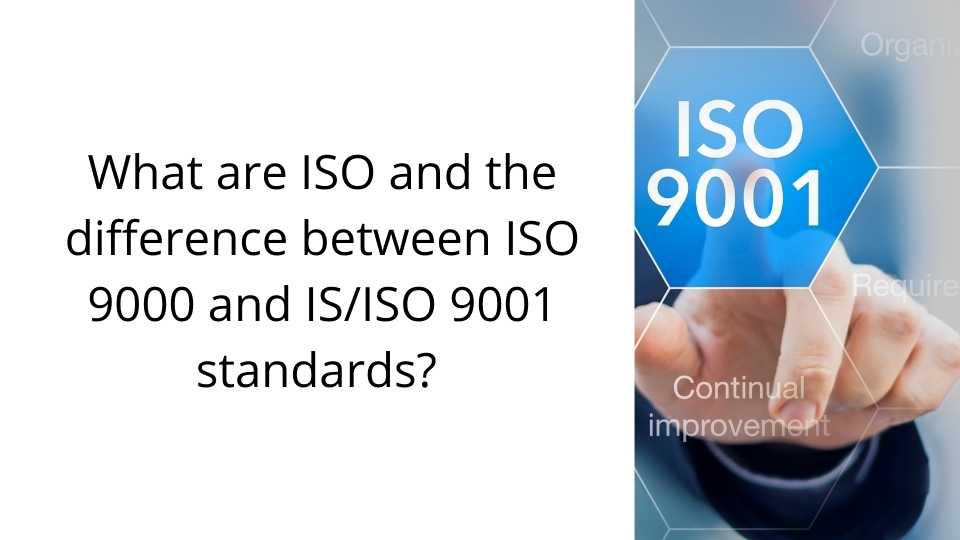By far the most important institution for developing voluntary worldwide standards is the International Organization for Standardization. It provides specifications, or rules, for products, services, and procedures, with the goal of making the industry more efficient and successful. They contribute to the removal of trade obstacles and the development of a global consensus. Obtaining ISO certification improves competitive advantages, hence expanding the client base. Customers have complete faith in firms that have an ISO certificate because certifying authorities offer such a certificate only if it meets the minimum requirements.
Internal audits are one of the critical aspects evaluated when issuing an ISO certificate. Since audits provide an overview of the company’s operations and whether it fits the requirements for an ISO certificate. ISO certification is a contract that specifies the precise standards, rules, or qualities that must be followed to ensure that the materials, products, and processes are completely suitable for their intended use. The quality management system ensures that the certified organization has the necessary processes in place to provide clients with high-quality products. Its primary goal is customer happiness.
A certification body, also known as a registrar, is an institution that distributes certificates and makes all strategic decisions based on proposals submitted by its members at an annual council meeting. ISO standard is essentially an agreement that contains certain standards, rules, or features to ensure that the materials, products, and processes are completely suitable for their intended uses. The quality management system ensures that the certified organization has the necessary processes in place to provide clients with high-quality items. Its primary goal is customer happiness.
What is the distinction between ISO 9000 and ISO 9001?
ISO 9000 is a set of standards that outlines a quality management system in general. It is essentially a set of quality assurance standards developed to assist firms in properly documenting the quality system that is not specific to any organization but is applicable to organizations of any size, whereas ISO 9001 is essentially a standard within the family. And the firms use the standard to ensure that their products and services fulfill the expectations of their customers in terms of quality and efficiency.
ISO 9000 addresses the fundamentals of the QMS (Quality Management System), such as customer focus, leadership, people involvement, process approach, system approach to management, overall improvement or continuous improvement, having a factual approach in decision making, and benefiting supplier relationships. Whereas ISO 9001 addresses the requirements that the organization must meet.
ISO 9000 is essentially a series of quality management standards developed with input from a diverse range of businesses and subject matter experts. It is primarily intended to assist any business, regardless of size, in being more controlled and efficient, and it focuses on management principles. ISO 9001, on the other hand, establishes the certification requirements and criteria.
Most individuals learn about the jargon related to process improvement from ISO 9000 papers. Understanding vocabulary is necessary to carry out ISO 9000 document improvement initiatives. Numerous aspects relating to the action that could result in improvements are not included in the documentation. On the other hand, if your organization wants to learn about strategies to improve, staff should read the ISO 9001 criteria. They will inform staff of the requirements for improving the company’s processes.
The certification process of ISO
The ISO certification procedure is as follows:
- Create an application or contract: A contract must be agreed upon by both the applicant and the registrar. This contract usually specifies all of the parties’ rights and obligations, as well as liability issues, confidentiality, and access rights.
- Quality document review: The ISO auditor will go over all of your quality manuals and papers pertaining to the various policies and processes in place at your firm. Existing work evaluation will undoubtedly aid the ISO auditor in identifying potential gaps against the ISO standards’ requirements.
- Create an Action Plan: Following the auditing process, you should be prepared with an action plan to close the gaps in your organization. The tasks that must be completed in order to bring about the desired improvements in your business must be stated. Perhaps you might train your personnel to work efficiently while adapting to new practices. In terms of efficiency and quality requirements, all staff must be aware of the ISO standards.
- Initial Certification Audit: It contains basically two stages:
